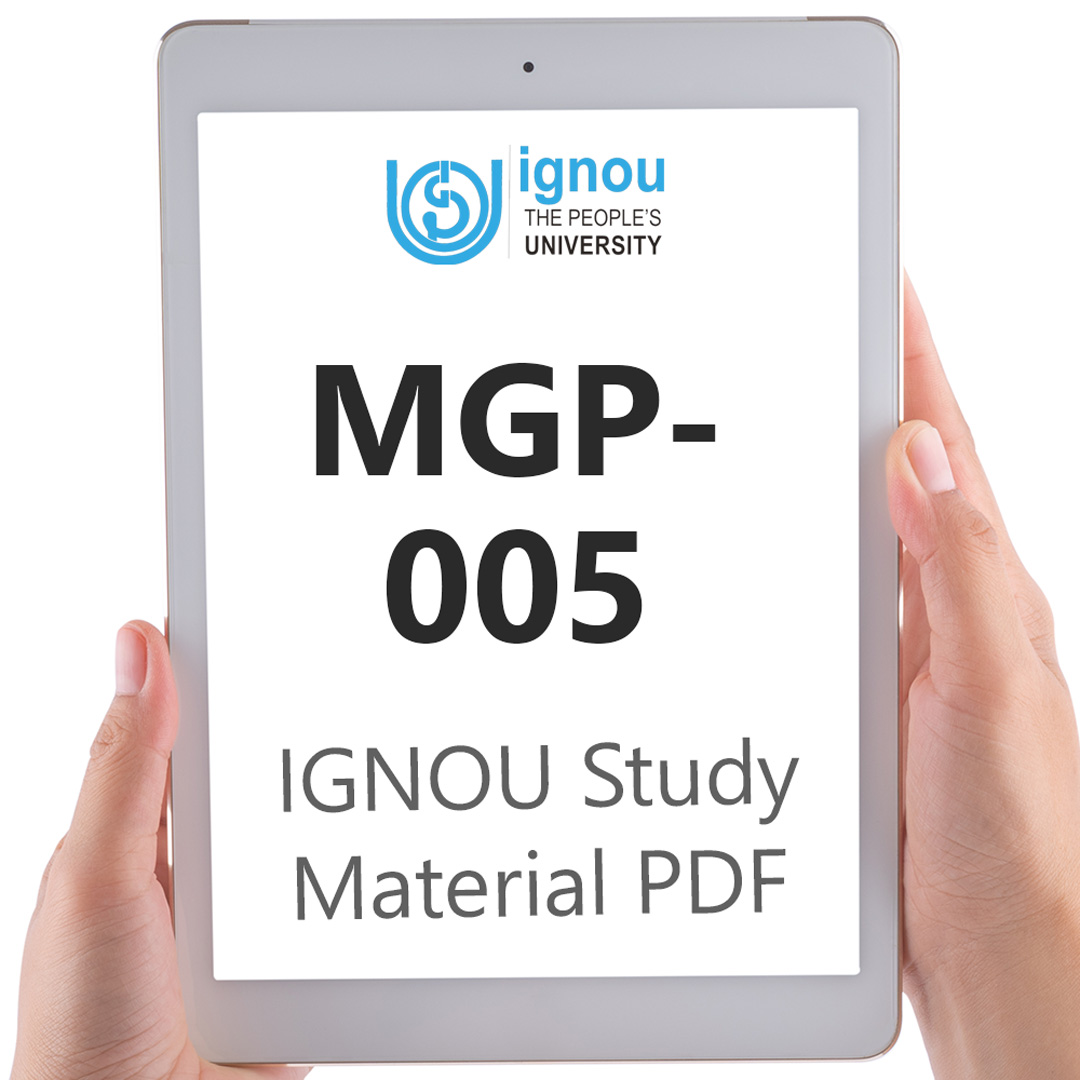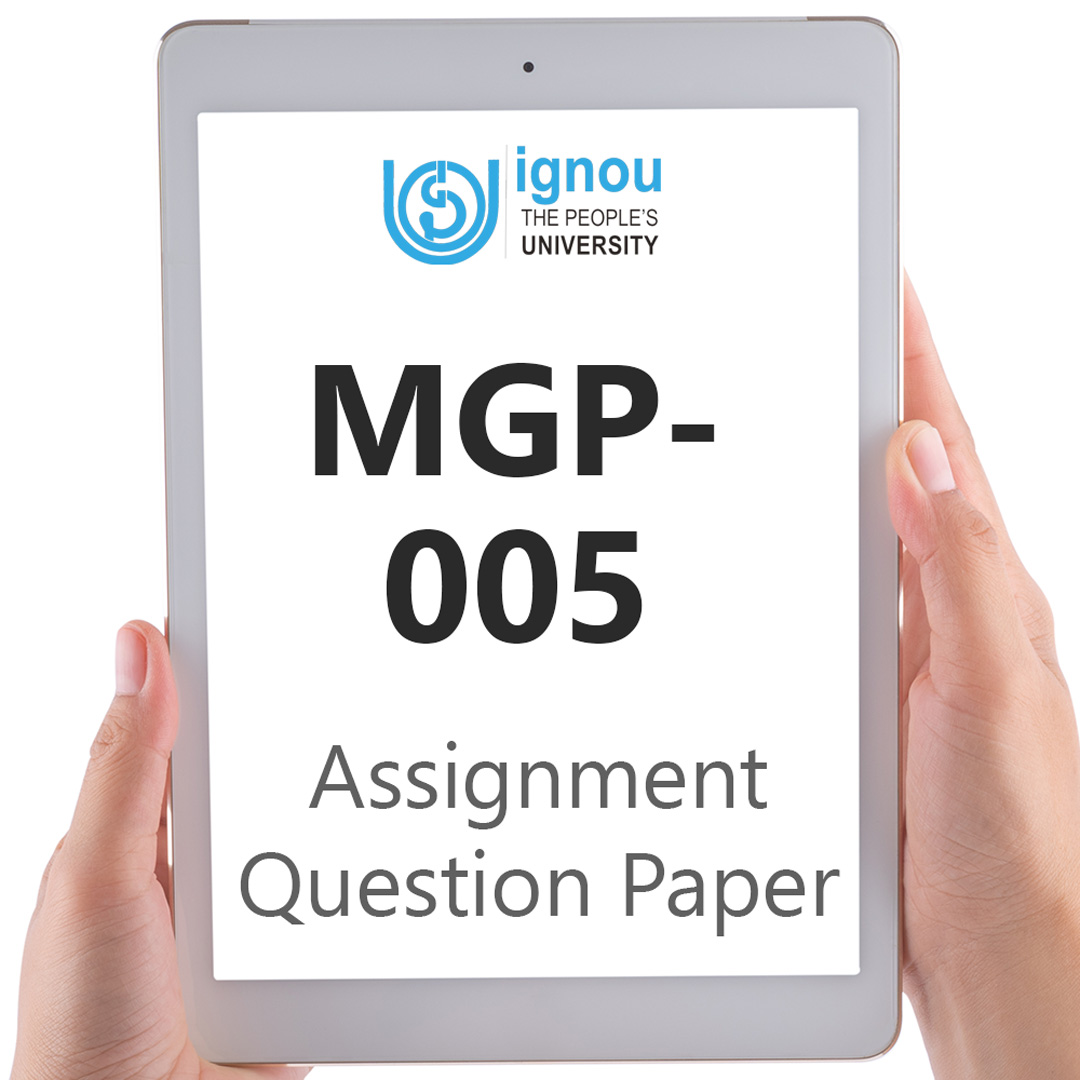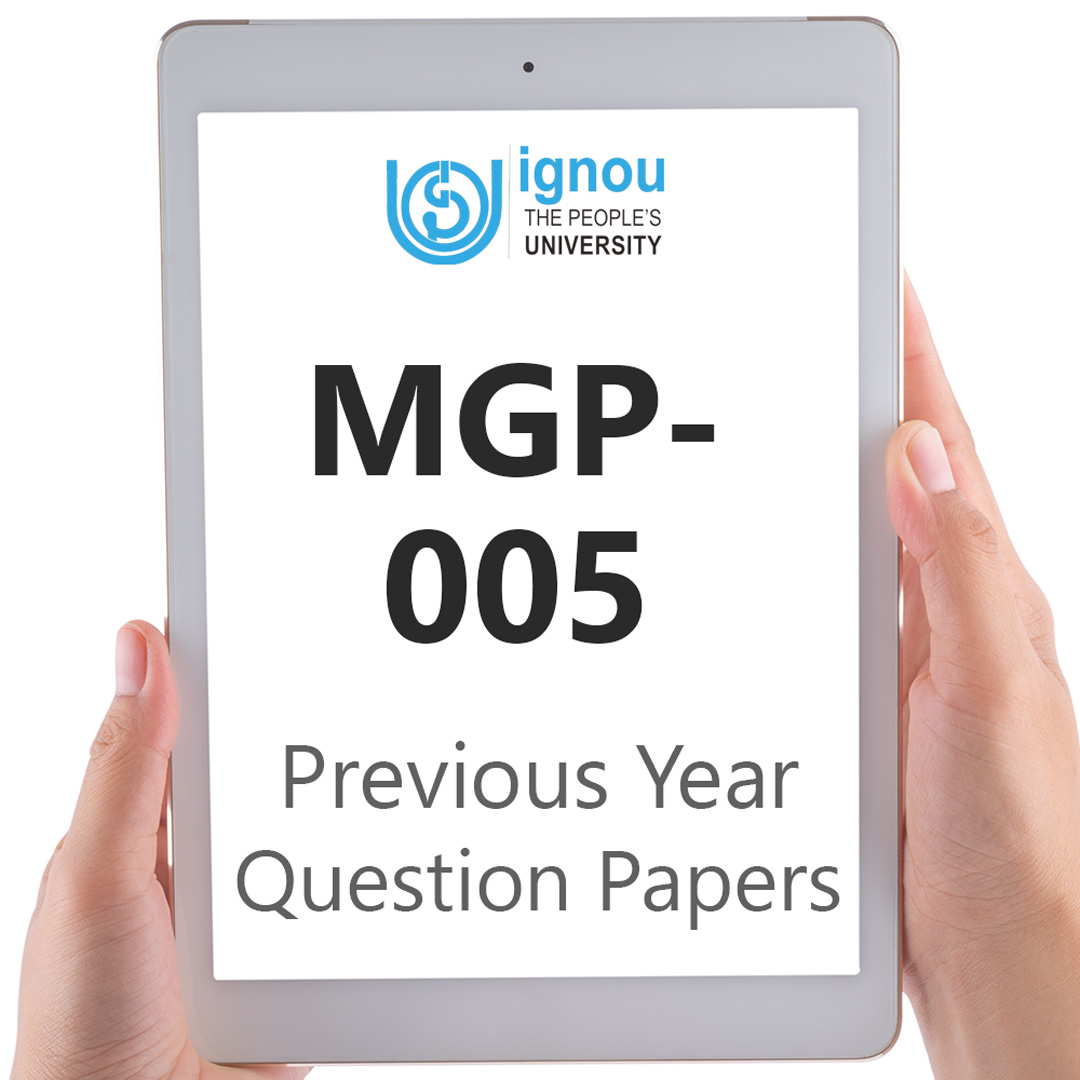If you are looking for MGP-005 IGNOU Solved Assignment solution for the subject Introduction to Peace and Conflict Resolution, you have come to the right place. MGP-005 solution on this page applies to 2022-23 session students studying in MGPS, MAPY, PGCGPS courses of IGNOU.
MGP-005 Solved Assignment Solution by Gyaniversity
Assignment Code: MGP-005/ASST/TMA/2022-23
Course Code: MGP-005
Assignment Name: Introduction to Peace and Conflict Resolution
Year: 2022-2023
Verification Status: Verified by Professor
Answer five questions in all, selecting at least two questions from each section. Each question is to be answered in about 500 words. Each question carries 20 marks.
Section-I
Q1) What are the different ways in which peace has been defined? Explain merits and demerits of different definitions.
Ans) Peace was merely seen as a must that came when conflicts ended. The career of peace as an independent concept, as opposed to one that is a by-product of conflict, is not very long. According to Encyclopaedia Britannica, the dominant trend in international law was the subordination of peace to the principal issue of war. There is no unified description of what peace actually entails. This is demonstrated by the fact that peace has been extensively defined in two different ways: In the first place, to connect calm with the absence of unrest.
Definitions of peace that view it as the absence of war are what Rapoport refers to as definitions by exclusion. For instance, relief from conflict, calm from suits or disorder, rest from uproar, etc. have all been used to describe peace. The variety of meanings attached to the word peace prevents us from having a clear understanding of what peace actually entails. There is still no clear-cut definition of what circumstances or social conditions can be considered peaceful.
The definitions explain what peace has meant to individuals in different historical contexts and geographic locations, as well as what various authors and compilers intended peace to imply. The word "peace" carries a lot of various meanings for different individuals at different eras and places. Two, there are positive definitions that assert a specific state should be qualified by the term peace, in contrast to negative, descriptive definitions. Positive definitions aim to correct the flaws that exist in negative ones of peace.
As Galtung points out, lack of violence should not be mistaken with absence of conflict violence can occur without conflict, and conflict can be resolved by means of peaceful procedures. Positive definitions do emphasise the importance of peaceful, nonviolent methods of resolving disputes, and this is accurate. In most instances, the focus placed on peace and nonviolence does not specify what ultimate state or goal peace and nonviolence are to achieve. Varied ideologies and activist organisations have different ideas about what constitutes peace in their eyes.
For instance, pacifism, a significant philosophical school, and a powerful social movement, sees the elimination of aggression from the human psyche as the supreme aim and the rejection of violence by people as a means to any and all objectives. Therefore, it is unclear when the rejection of violence will end. Contrary to this, peace advocacy emphasises organised action that is thought to support circumstances that are thought to be favourable to peace. These could include large protests against the threat or conduct of war as well as massive armament as a form of deterrent.
Perpetual or enduring peace is the subject of the second challenge. assuming that violence has been eradicated and that peace now reigns. Making a certain status quo permanent means preventing change at its source; the continuance of the same situation day after day takes on the status of a holy value, and maintaining the status quo becomes everyone's top priority. Change is not preferred because stable societies are preferred, despite the fact that change is just as essential to human existence as stability. Conflict in such an environment is a sure sign that required change needs to be made.
Q2) Discuss briefly the general sources of conflicts.
Ans) The general sources of conflicts are as follows:
Aggressive Human Nature
Many social psychologists and social scientists think that conflicts mostly stem from human nature. They claim that certain traits are innate or inherent in humans, such as aggression, a love or passion for position, power, and authority, a love of war, etc. According to Sigmund Freud, every person has opposing tendencies coexisting peacefully in their unconscious mind. Conflict only arises when the overt, verbal, symbolic, or emotional responses necessary to achieve one goal are incompatible with those of the target goal. A conflict scenario develops when a person is motivated to engage in two or more activities that are mutually exclusive.
According to legend, Cain and Abel are the sons of Adam and Eve. One day, God requests that they both make sacrifices for Him. God accepts Abel's sacrifice of his sheep flock's firstborn. The older son Cain sacrifices some farm goods, but God rejects his offering. God punishes the murderer by banishing him from the land and making him a fugitive who wanders the earth, but he also defends him from vengeful folk by branding him with a symbol. Cain establishes himself in the land of Nod, east of Eden, where he establishes towns. This storey explores the numerous factors that lead to conflict, including injustice, sibling rivalry, defenceless targets, and the non-recognition of Cain's sacrifice.
Socio-Economic and Political Inequalities
Since Aristotle's day, the connections between economic disparity and wars have been established. In Politics, Aristotle stated that slaves revolt to become equal and superior, and inferiors to become equal. Inequality is the mother of all uprisings, he continued. In the Federalist, James Madison referred to unequal property distribution as the most frequent and enduring source of conflict.
Political violence, according to Frederick Engels, arises when political systems are out of step with socioeconomic circumstances. These all express the fundamental connection between socioeconomic inequality and conflict. The impoverished and undeveloped countries are being marginalised in the current age of globalisation. Many of the world's poorest nations are excluded from the developing prospects for international trade, investment, and the use of new technologies. The underlying cause of organised conflict is horizontal inequality. Certain minority groups often engage in conflict with the dominant or majority group that holds political power when they are denied political and economic empowerment.
Such intergroup disputes can be resolved if marginalised groups are given political and economic space within the political system. The ultra-leftist/communist parties who support drastic socioeconomic change in society and want to implement it through extra-constitutional means, such as the use of force, are responsible for starting it. They want to create an equitable social structure and fairly redistribute land and income among the members of society. Extremist tactics are used by Naxal gangs to carry out violence, including kidnapping politicians, police officers, and other security people.
Denial of Human Rights
Conflicts may arise from disputes over rights or from the denial of rights. They may be more specifically outlined in national or state constitutions or laws, or they may contain the human rights enshrined in the Universal Declaration of Human Rights. In each of these situations, the issue is not one that can be readily resolved since people do not compromise their fundamental rights or their religious convictions. They stand up for them. Every dispute has a human rights angle or component at its root.
Q3) Examine the coercive methods of conflict resolution.
Ans) The coercive methods of conflict resolution are as follows:
Coercive Methods Short of War
The states of disputes that cannot be resolved peacefully adopt the following coercive but non-violent techniques. These strategies are undoubtedly hostile and a sophisticated kind of vengeance against the enemy.
Retortion: The state's approach of retaliation is legal but purposefully hostile, with coercive or retaliatory motives. According to international law, a state has the right to retaliate when another state treats it disrespectfully.
Reprisal: It is another form of state coercion that generally involves the use of all kinds of coercive methods. It has to do with the strategies used by states to obtain redress from another state by retaliating.
Embargo: It is yet another form of coercive action taken by states in retaliation for a belligerent state's activity. The impacted nation employs embargo measures when a state violates international law or commits a transnational crime. By employing this tactic, the government seeks to impose a whole or partial ban on the export of any goods to a specific country or set of nations.
Boycott: It is the embargo's opposite. By employing this tactic, a state is able to halt imports from any nation that violates international law or participates in transnational crime. It is possible to pursue it on both an official and informal level. By refusing to accept products from a certain nation, the impacted state may cause economic difficulties for the latter. Even the states will occasionally use it to advertise their homegrown or indigenous goods.
Pacific Blockade: Blockading the ports of a belligerent state is a highly regular naval action during times of war.
Intervention: It is just another coercive tactic the states employ to settle disputes. Its use can be both diplomatic and military in nature. The UN Charter has some clauses that, in theory, forbid the use of intervention. The unilateral use of force or threat of such force by states in their international relations is forbidden, as stated in Article 2(4). Similar to this, Article 2(7) forbids the UN from interfering with a state's internal affairs. Even occasionally, UN resolutions prohibit the organisation from interfering in the internal affairs of other states.
Collective Security: The employment of collective security measures is limited and reserved for extreme cases. Due to developing hegemony and control of the lone superpower, it is still more improperly regulated even in the decades following the end of the Cold War.
Coercive Methods Through War
The use of organised violence in the shape of war has always been the last and unanswerable means of creating peace. It can be split into two general groups based on the tactics, reach, and intensity of the war:
Limited War: A limited war is one that is fought with specific goals and voluntary governmental limits on the use of force. Here, achieving a specific aim is more important than achieving total victory or the extermination of the adversary. Even in the face of conflict, there is always room for negotiation.
Total War: War has taken on a totalitarian trajectory with the advent of weapons of mass devastation in the shape of chemical, biological, and nuclear weapons. This form of conflict has the ability to destroy the system by endangering connections and threatening to change them significantly, dysfunctionally, and permanently. Here, total victory or even the elimination of the enemy is the goal of the conflict. This conflict has a very broad objective, and it uses weapons of enormous power and deadly capabilities.
Section-II
Write a short note on each part of the question in about 250 words:
Q1) (a) Negotiations
Ans) Negotiation is the term used to describe this. Arguments based on logic or reason may help to resolve the conflict amicably. An open or partially open statement of settlement must be announced when mutual confidence has been built up and a give-and-take arrangement has been made. It is frequently necessary to hold several rounds of discussions, sometimes out of the public eye. It is also true that difficult, private diplomatic rounds of negotiations frequently result in long-lasting resolutions.
It has been observed that in these times of difficult negotiations, professional diplomats and technical experts bear the bulk of the responsibility for conducting discussions. But in order to modify the fundamental position of discussions, it is imperative to return to the headquarters' authorities. There is a lot of pressure on the negotiating stance from the media and academia. It's important to carefully consider not only the political and technical sides of a negotiation but also its psychological components. The process of selling a negotiated deal would be challenging even if there was democracy at home with a vocal opposition and mass media.
Negotiated agreements that are supported by a shared knowledge of the core issues and a spirit of compromise are preferable. Solutions that are hurried, unclear, pressed, or highly customised are insufficient to replace fair agreements that have been thoroughly investigated and broadly consulted. When holding talks, it's crucial to create a positive environment. Negotiated agreements typically result in the publication of a joint communiqué or, if the issue is substantial, a treaty or accord.
Q1) (b) Mediation
Ans) An outsider to the issue is involved in third-party help through mediation, but they do not have the authority to decide on behalf of the parties. Considering a mediator to be purely selfless may be a little naive. The mediators typically have a hidden purpose that, while not always major, is nonetheless present. A mediator's interaction with disputants is scarcely free from political considerations.
It may be safe to conclude that the following comprise the fundamental qualities, as highlighted by Jacob Bercovitch, given the numerous instances of mediation being used to resolve interstate conflicts:
The practise of nonviolent dispute resolution is continued and expanded through mediation.
When two or more states or other actors are at odds, mediation entails the intervention of an outsider—a person, a group, or an organisation with their own values, resources, and interests.
A non-binding, non-violent, and ultimately non-coercive form of intervention is mediation.
When mediators engage a conflict, whether it be domestic or international, they do so with the intention of influencing it in some way.
Conflict resolution through voluntary mediation is possible.
Example: The Netherlands has taken on this role in the Sri Lanka-LTTE conflict; at the time, U.S. President Bill Clinton played a notable role as a mediator/facilitator in arranging direct talks between Palestine and Arab parties (and getting the Camp-David Accord signed by them); Pandit Jawaharlal Nehru/Krishna Menon played an important role in bringing about a truce between Korea, China, and the U.S. in 1950-1953.
Q2) (a) Terrorism and Civil Deaths
Ans) The nuclear holocaust that took place in Hiroshima and Nagasaki resulted in the deaths of around 150,000 people and left many more severely disfigured and crippled. The so-called "war on terror" and the "holy war" waged by terrorists have directly resulted in the deaths of 6,200,06 people, the creation of 4.5 million refugees, and a cost to the West that is greater than the amount required to pay off the debts of all of the world's developing countries combined.
The enormous scope of the fight, which has claimed lives all the way from New York to Bali and London to Lahore and all the way from Lahore to India and Sri Lanka, has actually raised the question of whether or not the 'War on Terror Can Be Won?' Some academics believe that terrorism, similar to other scourges such as violent crime, lethal sickness, and other ills, can be mitigated and contained, but it cannot be completely eradicated.
A religious ideology that is saturated with an unyielding enmity for all secular governments, particularly those in the West and the United States in particular, is the source of the new form of terrorism, according to Goh Chok Tong, the Prime Minister of Singapore. Huntington referred to this phenomenon as the collision of civilizations. This form of religious terrorism is extremely different from insurgencies or violent conflicts that arise as a result of economic distress on the periphery because the group responsible for this religious terrorism has a clear aim and a systematic terror system that keeps the process continuing.
Q2) (b) Gandhi and Peace Education
Ans) Gandhi believed that the source of all evils was violence. He believed that non-violence should be the fundamental principle directing our daily activities and that it is an integral, significant, and vital component of education. Gandhi asserted that moral and ethical education should be used to provide the groundwork for a man's development of morality from an early age. He saw this as crucial to the overall growth of a person's personality in general and to moving forward on the path of peace in particular. Gandhi's approach to value education familiarises us with the importance of fundamental education that emphasises social consciousness and the dignity of every person from a holistic perspective.
Gandhi's educational philosophy placed a strong emphasis on morality and spirituality. He set forth guidelines for the pupils to follow in order to assure morality and righteousness because education entails more than just knowing ideas; it also involves developing one's knowledge and spirituality. He believed that education should equip people with the skills necessary to analyse situations logically and respond in a peaceful, tolerant manner, even in the face of adversity.
Gandhi thought that including religious studies in the curriculum would strengthen students' moral character and help them to develop tolerance, humanity, and forbearance. It would be simple to instil the values in the students very early on because every faith preaches and recommends peace. Gandhi believed it was necessary to introduce religion studies because India is a country with many different cultural traditions in order to promote long-term peace. Gandhi's strategy might be considered a key element in creating a lasting culture of peace.





